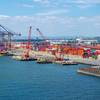Many oil companies reported a decrease in net income for the second quarter, compared to the previous year's results, although - in most cases - the second quarter still outperformed the first. While the decreases ranged in percentage, only a few companies' results were virtually unchanged from the previous year's performance.
However, higher crude oil prices resulted in many companies' exploration and production net income actually increasing over the previous year.
"I am encouraged second-quarter operating earnings, although down from year-ago levels, were more than six times higher than in the first quarter, reflecting the impact of higher crude oil and natural gas prices, higher motor fuel margins and improved plant operations," said Jim Mulva, CEO of Phillips Petroleum Company, which reported second-quarter net income of $68 million, a 57 percent decrease from earnings of $158 million for the same period last year.
For the six months, net income was $138 million compared with $401 million for the same period in 1998. Total revenues were $5.8 billion, versus $6.3 billion a year ago.
Exploration and production net operating income for the quarter was $99 million, up from $76 million in the same quarter a year ago, primarily due to higher crude oil prices, partly offset by higher dry hole costs.
Exploration and production net operating income for the six-month period was $153 million, down from $174 million a year ago, mainly due to lower natural gas prices and higher foreign dry hole costs.
Mobil Corporation reported second quarter 1999 estimated operating earnings of $650 million. This is essentially unchanged from the $655 million earned in the same period last year. Operating earnings per common share, assuming dilution, were $0.81, the same as in the second quarter of 1998.
USX-Marathon Group's net income adjusted for special items was $119 million in second quarter 1999, compared with net income adjusted for special items of $162 million in second quarter 1998. The Marathon Group recorded second quarter 1999 net income of $134 million. Net income in second quarter 1998 was $162 million.
Income for Marathon's operating segments was $371 million in second quarter 1999, versus $473 million in second quarter 1998. Worldwide exploration and production (upstream) operating segment income totaled $124 million in second quarter 1999, versus $73 million in second quarter 1998.
Chevron Corp. announced second quarter 1999 net income of $350 million, a decrease of 39 percent from net income of $577 million for the 1998 second quarter. Net income for the first six months of 1999 was $679 million, down 37 percent from $1.1 billion for the first half of 1998.
U.S. exploration and production net income for the 1999 second quarter was $98 million, up from $85 million in the 1998 second quarter.
Unocal Corporation reported preliminary net earnings of $9 million in the second quarter 1999. The 1999 results compare with reported earnings of $105 million a year ago.
"During the quarter, we demonstrated we can drill deepwater exploration wells at significantly lower cost than our competition," said Roger C. Beach, Unocal chairman and CEO. "You can't find oil and gas unless you drill wildcats, and not every well is going to be successful. The key to success in this business is to maximize your drilling dollar, and the combination of our large prospect inventory and our 'top of class' drilling capabilities allow us to do just that. We intend to maintain our cost leadership, which will allow reserve and production growth with higher returns on investment and future earnings."
Spirit is currently preparing to launch its "ultradeep" Gulf of Mexico program, which will focus on prospects in the emerging fold belt and sub-salt trend that showed significant potential in the Spirit's earlier discoveries.
Texaco reported second quarter 1999 income before special items of $286 million. This compares with income before special items of $335 million for the second quarter of 1998. Net income was $273 million for the second quarter of 1999 and $342 million for the second quarter of 1998.
For the first half of 1999, income before special items was $391 million compared with $594 million for last year. Net income was $472 million for the first half of 1999 and $576 million for the first half of 1998.
Oil Service Companies
For oil service companies, the poor performance from oil companies directly impacted their own financial results. Dayrates dropped and utlization decreased dramatically. Consequently, revenues were halved in some cases, and net income totals plummeted.
R&B Falcon Corporation reported a loss from continuing operations of $14.2 million for the three months ended June 30, 1999, compared with income from continuing operations of $59.9 million for the three months ended June 30, 1998.
Operating income for the quarter ended June 30, 1999 was $8.9 million on revenues of $226.5 million, compared to operating income for the quarter ended June 30, 1998 of $111.1 million on revenues of $281.1 million.
The loss for the quarter is directly attributable to reduced demand for drilling services, particularly in the shallow and inland water segments. Average fleet utilization for the current quarter was 38 percent compared to 81 percent for the same quarter in the preceding year. For the six months ended June 30, 1999 average fleet utilization was 40 percent compared to 84 percent for the same period in 1998. Revenues were $54.6 million lower in the current quarter compared to the year ago quarter despite contributions of $79 million from recently acquired Cliffs Drilling Company.
Trico Marine Services, Inc. reported a net loss for the second quarter ended June 30, 1999, of $10.8 million after an extraordinary one-time charge of $1.8 million. This compares to net income of $11.7 million for the second quarter of 1998. Second quarter 1999 revenues were $26.7 million compared to $52.9 million last year.
Trico's net loss for the second quarter resulted from decreases in average day rates for all classes of the company's vessels. Supply boat day rates in the Gulf of Mexico averaged $3,123 for the quarter, compared to $8,065 for the same period last year, and $3,662 for the first quarter of 1999. Day rates for lift boats in the Gulf of Mexico averaged $4,016 in the second quarter of 1999 compared to $6,072 last year.
Second quarter results were also affected by an unusually high level of vessel downtime and repair and maintenance expenses for several of Trico's larger vessels, which normally earn higher day rates. Additionally, the company experienced delays in shipyard deliveries for two new vessels -- one in the North Sea and one in the Gulf of Mexico -- which had been expected to contribute to second quarter results.
The utilization rate for Trico's Gulf of Mexico supply boats was 52 percent for the second quarter 1999, compared to 70 percent a year ago. Drydocking and vessel refurbishment impacted the company's supply boat utilization rates for both periods, and deactivation of 10 supply boats impacted 1999 utilization.
ENSCO International Inc. reported a net loss for the three months ended June 30, 1999 of $9.8 million on revenues of $79.4 million, compared to net income of $80.6 million on revenues of $234 million for the three months ended June 30, 1998.
ENSCO's net income for the first six months of 1999 was $10.2 million on revenues of $207.1 million, compared to net income of $167.8 million on revenues of $480.4 million for the prior year period.
The decline in the financial results is due to sharply reduced demand for contract drilling and related services in 1999 as compared to the prior year.
During the second quarter of 1999, the Baker Hughes U.S. Rig Count reached an all time low. The average day rate for the company's jackup fleet was approximately $23,000 in the second quarter of 1999, compared to $63,000 for the year earlier period. Utilization of the company's jackup fleet decreased to 71 percent in the most recent quarter from 89 percent in the second quarter of 1998.
In the marine transportation segment, average day rates in the second quarter of 1999 for the company's fleet of oilfield support vessels decreased to $4,200 from $8,100 in the year earlier period. Average utilization for the company's marine fleet was 61 percent in the second quarter of 1999 compared to 83 percent in the second quarter of 1998.
Sponsored Content
Lower carbon intensity fuels to support your operations

Subscribe for
Maritime Reporter E-News
Maritime Reporter E-News is the maritime industry's largest circulation and most authoritative ENews Service, delivered to your Email five times per week










